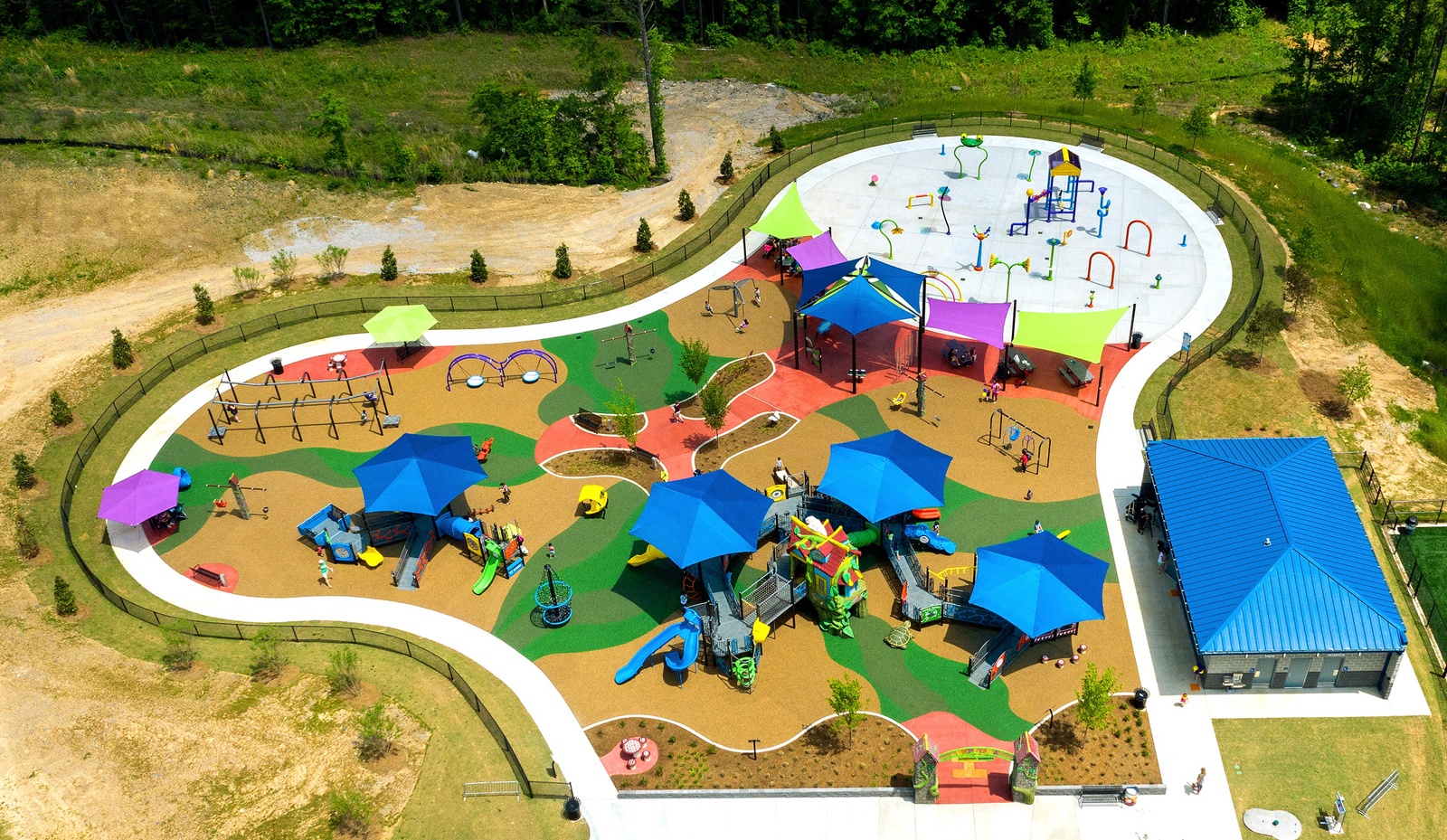Custom multigenerational inclusive playgrounds are one-of-a-kind play spaces that draw in people from other communities creating destination parks. Because of their uniqueness, people are willing to travel to these playgrounds to provide their children with unparalleled fun. Besides that, these parks are for the young and old alike. The entire family can play, stay fit and be active together. It’s no wonder destination parks define communities!
CR Studio Design works with landscape architects to help create unique play, fitness and recreation design concepts creating destination parks. If you are working with a client who is planning a large multigenerational play and fitness space or inclusive playground, it’s worth considering a destination park for their community or organization. Below are several design concepts to consider when planning a destination park.
Consider Different Types of Play
Children play differently. Some kids enjoy active play and competitions while others prefer imaginative play. A good playground design takes different types of play into consideration and offers a variety of play equipment for children to learn, discover and explore.
For instance, sandpits with diggers, water bubblers and musical instruments are good for sensory play. Kids who enjoy active play will need swings, climbing opportunities with challenge and large areas to run around. Themed destination playgrounds support imaginative and social play.
Selecting equipment that is inclusive and multigenerational will encourage the entire family to play together, be physically active and enjoy the park. Providing commercial play and fitness equipment along with pathways, places to sit and relax and open greenspaces allows families to come and stay the day participating in various recreational activities. Designation parks make for great family day trips or weekend exploration of nearby communities.

Create Various Zones or Areas
Destination parks tend to be multigenerational, inclusive and larger in size so they are often divided into different zones or areas. For example, you can separate your playground into zones based on the type of play (swings, sensory, climbing) and or the age the equipment is designed for. Having various zones or areas makes it easier for kids to spread out and discover what aspects of the playground they like best.
Providing a range of play experience allows for maximum growth and development potential. When kids have access to a wide variety of playground equipment and play areas, they can move between playground equipment that develops motor skills and balance, and playground equipment that helps them build their physical, social and emotional skills. They can also choose to play in areas designed to encourage sensory play. Providing a wide variety of play experiences inspires children to grow and learn in a number of ways.
Consider integrating the topography of the site as well as landscaping to designate certain play areas and add interest to your overall design. Connecting areas with pathways will allow children and their families to move easily throughout the playground and encourage exploration of the various zones or types of play. Colors and signage can provide visual clues to park guests that another new area awaits them.
Select a Theme
Destination parks can choose a theme and keep it consistent throughout the entire play and recreation space. For example, if you choose a nature theme you might have a large inclusive treehouse play structure with climbing nets, conifer climbers, fallen log balance beam, mushroom stepping pods and various animal spring riders. To be consistent with the nature theme throughout the park, the picnic shelter could have GFRC posts that look like and feel like the actual bark on a tree.
When selecting a theme for your playground project, consider your audience and what they would find most interesting. Your client might be interested in picking a theme based on the history of the community.
As an example, if the playground is going in a coastal town, a nautical theme might be selected. Your design could include a large ship play structure with a tall mast, whale and other water related spring riders, and a lighthouse climbing structure; and completed with poured-in-place rubber in blue with waves, seahorse and starfish graphics incorporated throughout the safety surfacing. The playground will likely be known as the “Nautical Park” or the “place with the large ship playground” bringing in people from other communities.
Incorporate Water
Every destination park can benefit from water. Including water with outdoor play makes it MORE FUN, plus helps keep us cooler on those hot sunny days! Destination parks use a variety of water play concepts in their designs. Some have small water play bubblers or spray features while others have fountains or misters. Others may have a fully designed water play area called a splashpad where kids can stand under dumping buckets, run through sprayers or slip and splash down a water slide.
Other Considerations
Other considerations to include in your project design for a destination park playground are shade, site furnishing and restrooms. Keeping in mind that destination playgrounds or parks are places where guests will be staying for longer periods of time and will need restrooms and places to rest, watch their children play and get out of the sun for awhile and cool off.
Shades come in a variety of sizes and styles and can add interest to the overall design. Be sure to includes adequate site furnishings like park benches and picnic tables so guests can be comfortable and enjoy their day at the park. Include litter receptacles throughout the park so the space will continue to look nice and well kept.
If you are interested in creating a multigenerational inclusive playground or destination park, contact CR Studio Design today. We can assist you with all aspects of your playground design and creating a destination park that will be a draw to the community and impress the client. Let’s design a destination park for your community today!
